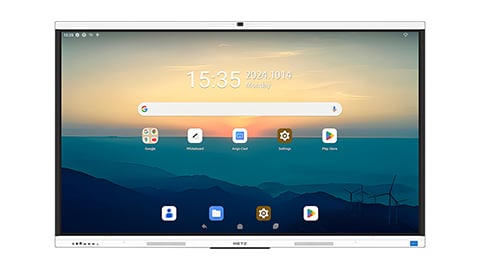Enhancing Learning and Engagement with museum interactive displays
In today's digital age, museums are embracing technology to create immersive and interactive experiences for visitors. Gone are the days of passive observation; modern museums now employ innovative museum interactive displays to educate, entertain, and captivate their audiences. These digital installations offer a unique way to engage with exhibits, allowing visitors to explore and learn at their own pace. In this article, we will explore the various aspects and advantages of museum interactive displays.
1. Making Learning Fun
Museum interactive displays revolutionize the way people learn by making it an enjoyable and interactive experience. Traditional exhibits often rely on text-heavy displays and static artifacts, which can be overwhelming and disengaging for some visitors. However, with interactive displays, information becomes easily accessible through videos, animations, and touchscreens. This not only caters to different learning styles but also captures the attention of visitors, making the learning process more enjoyable and memorable.
2. A Multi-Sensory Experience
Unlike traditional displays, museum interactive displays offer a multi-sensory experience that appeals to different senses. Whether it's a touch-sensitive screen, a virtual reality headset, or a sound-based interactive installation, these digital displays engage visitors on a deeper level, creating a connection between learning and the senses. For example, a museum interactive display about ancient Egypt could allow visitors to virtually explore the pyramids, feel the texture of hieroglyphics, and hear the sounds of the Nile.
3. Personalized Learning
One of the significant advantages of museum interactive displays is their ability to cater to the individual needs and interests of visitors. These displays often include interactive quizzes, games, and customizable content. Visitors can choose their preferred level of difficulty, delve deeper into specific topics, and explore at their own pace. This personalized approach to learning ensures that visitors of all ages and backgrounds can engage with the exhibits in a meaningful way.
4. Promoting Accessibility and Inclusivity
Interactive displays promote accessibility and inclusivity within museums. These installations can be designed to accommodate different abilities, enabling individuals with disabilities to fully engage with the exhibits. For example, touchscreens with adjustable heights, captioned videos for the hearing impaired, and tactile elements for the visually impaired are just a few ways interactive displays can create a more inclusive environment. By removing barriers, museums can ensure that everyone has equal access to valuable educational experiences.
5. Encouraging Collaboration and Social Interaction
Museum interactive displays encourage collaboration and social interaction among visitors. Instead of experiencing exhibits in isolation, these displays often incorporate multiplayer games and activities that foster group participation. Whether it's solving puzzles together or competing in virtual challenges, visitors can engage with one another, share knowledge, and build connections. This social aspect adds an element of excitement and makes the entire museum visit a communal experience.
6. Providing Real-Time Updates
Interactive displays can provide real-time updates and dynamic content, ensuring that museums can keep their exhibits fresh and relevant. Display screens and digital information panels can be easily updated with new information, recent discoveries, or temporary exhibitions. This flexibility allows museums to adapt and evolve, providing visitors with up-to-date and accurate information. Additionally, interactive displays can also help in preserving fragile artifacts by displaying digital replicas or high-resolution images.
7. Immersion through Virtual Reality
Virtual reality (VR) has become increasingly popular in museum interactive displays, offering visitors a unique and immersive experience. By donning a VR headset, visitors can transport themselves to different time periods or locations, providing a simulated firsthand experience. For example, a VR display could allow visitors to explore a virtual ancient Roman city or witness a historic event. This level of immersion enhances the educational value and leaves a lasting impression on visitors.
8. Interactive Displays for Kids
Museum interactive displays are particularly beneficial for engaging children in learning. These displays often incorporate gamification elements, interactive storytelling, and intuitive interfaces that are appealing to younger audiences. By making learning enjoyable and interactive, children are more likely to retain information and develop a lifelong interest in history, science, art, and other subjects. The use of interactive displays also encourages critical thinking, problem-solving, and creativity in children.
9. Data Collection for Visitor Insights
Museum interactive displays provide the opportunity for museums to collect valuable data on visitor engagement and interests. Through interactive quizzes, surveys, and tracking user interactions, museums can gather insights into visitor preferences, the effectiveness of exhibits, and areas for improvement. This data-driven approach enables museums to tailor future displays, programs, and events to meet the evolving needs and interests of their audience.
10. The Future of Museums
Museum interactive displays are undoubtedly shaping the future of museums. As technology continues to advance, so do the possibilities for creating even more engaging and immersive experiences. From augmented reality to artificial intelligence, future interactive displays will continue to blur the line between the physical and digital worlds, transporting visitors to new realms of exploration and understanding.






